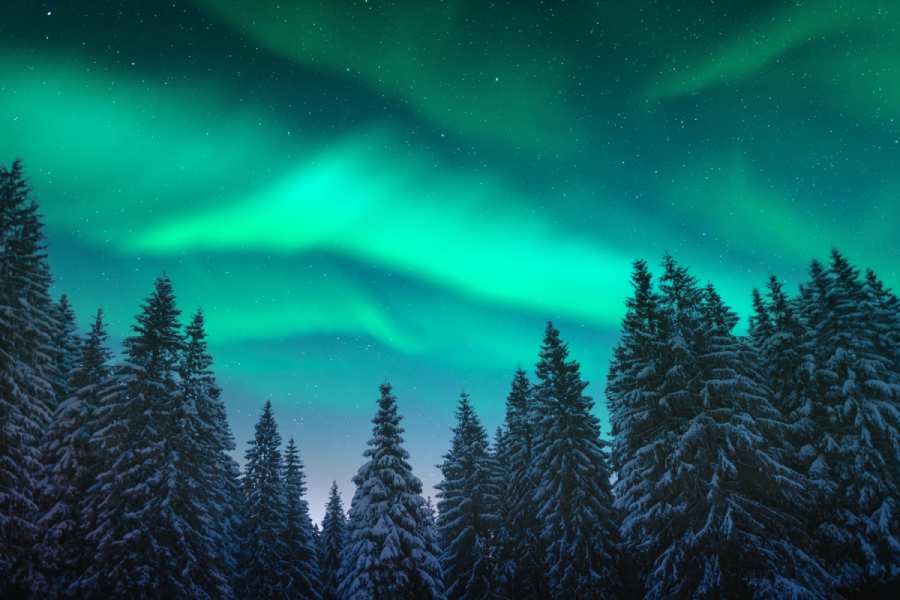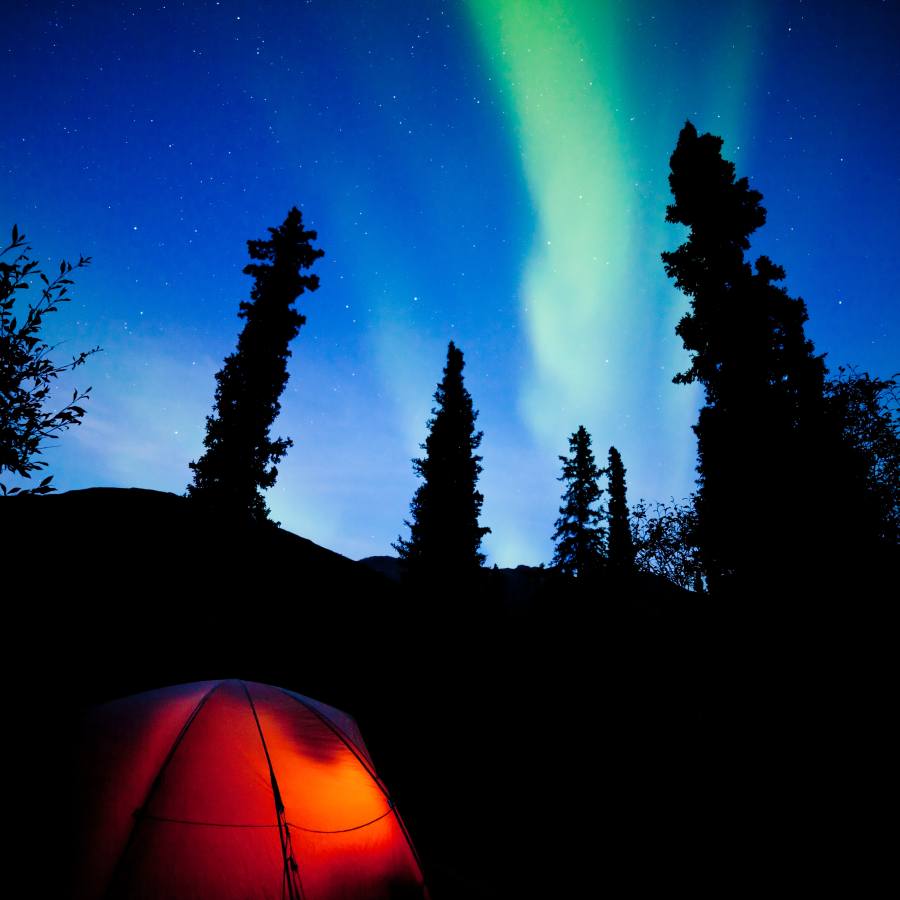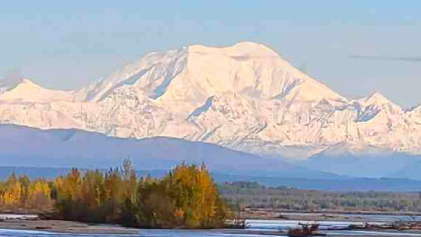What Is The Best Time Of Year To View The Northern Lights In Alaska?
Download Travel Details >PRIVATE & SMALL GROUP TOURS TO THE WORLD'S BEST DESTINATIONS
Three Amazing Alaskan Vacations To Choose From!

Planning Your Aurora-Watching Tour In Alaska
Alaska’s Aurora Season runs between late August and late April, with its peak in March. What you may not know, however, is that you can also see the Northern Lights in Alaska during the fall and winter months. In fact, one of the best times of year to view the Northern Lights in Alaska is during the months of September and October, when the auroral activity is high. During the latter half of the year, the hours of daylight decrease across the state, giving visitors a better chance to see the aurora borealis. The farther north you go, the more hours of darkness you will have during the fall and winter months, too – meaning that your aurora-watching adventures do not have to take place too late. Just keep in mind, however, that the best hours to view the Northern Lights in most areas of Alaska fall between 9 p.m. and 2 a.m. when you are making your plans!

Chasing the Northern Lights In November
If you’re interested in seeing the Aurora Borealis in Alaska in November, you’re in luck! It is still possible to see the Northern Lights in Alaska’s sky., although the auroral activity is rated "medium" during this month. However, it is still early enough in the winter season to not be too cold. As an added bonus, many of the summer tourists who visit Alaska during the summer months – or peak tourist season – will not visit Alaska during the cold months. You’ll have the nighttime skies to yourself, and will be able to enjoy classic winter activities like dog sledding and snowshoeing during the daytime hours without the crowds. Just remember, daytime hours are limited during the winter months, so you will have to plan your other activities with that in mind.
Celebrate The Winter Solstice With An Aurora-Watching Adventure
The Winter Solstice is the shortest day of the year and typically falls between December 20 and 23. This is one of the best times to see the Northern Lights in Alaska in December! Typically, the auroras are less active during the month of December, and winter snow storms can obscure your view of this phenomenon. However, auroral activity increases around both the equinoxes and the solstices, which means this short window of time has the possibility to be good Northern Lights viewing.
During the solstice, Juneau has approximately six hours of daylight. Farther north, Fairbanks has just three hours of daylight! And if you travel to the Arctic Circle, you’ll experience 67 days of darkness – including the Winter Solstice. This creates amazing and endless opportunities to see the Northern Lights in Alaska and to celebrate the solstice with the locals. Anchorage, for example, lights up the streets with ice lanterns and sets off fireworks to celebrate the season. This is a great opportunity for visitors to enjoy a slice of local living and have the opportunity to see the aurora borealis later that night.Just remember that
How To Keep Warm While Watching The Northern Lights
 Although March is traditionally the best time of year to view the Northern Lights in Alaska, many people enjoy traveling in the off-season and combining their aurora adventures with classic winter activities! Just plan ahead and pack for the cold and the snow if you want to gaze at the night sky during the wintertime. Packing the right gear will help you be more comfortable during your aurora-watching expedition. Here are a few of the items you will definitely need for a winter aurora-viewing adventure:
Although March is traditionally the best time of year to view the Northern Lights in Alaska, many people enjoy traveling in the off-season and combining their aurora adventures with classic winter activities! Just plan ahead and pack for the cold and the snow if you want to gaze at the night sky during the wintertime. Packing the right gear will help you be more comfortable during your aurora-watching expedition. Here are a few of the items you will definitely need for a winter aurora-viewing adventure:
- Wool socks – forget cotton! Wool will keep you warm and dry in heavy winter boots, even if your feet get wet.
- Base layers – you’ll need a moisture-wicking set of long johns to venture outside for winter Northern Lights viewing.
- Regular outerwear – you can wear your normal pants and shirt over your base layer if you aren’t planning to do a lot of activity that will make you sweat. Otherwise, moisture-wicking outwear is a good idea to layer over your long underwear.
- Snow pants or snow bibs – you’ll want a pair of insulated pants or overalls for additional warmth and to repel the wet snow.
- A warm coat! A single heavy coat will keep you warm when you’re gazing toward the sky and not working up a sweat. If possible, choose a synthetic and insulated option, rather than down.
- Boots – if you tend to have cold feet, it’s a good idea to purchase a warm set of boots. There are options for boots that are rated as low as -120 degrees. Shop around and choose the right pair to keep your feet toasty warm.
- A warm winter hat – much of your body heat escapes from your head, so a good hat is a must. Choose wool to keep your head warm and dry, or opt for an insulated synthetic option.
- A scarf or a gaiter – get your body heat in and don’t let it sneak out through the neck of your coat. A nice fleece gaiter or wool scarf adds another layer of insulation to your ensemble.
- Mittens – mittens are warmer than gloves because they allow your fingers to stay together and warm themselves. But you may want a pair of liners underneath to add an extra layer of warmth.
- Hand and to warmers – having a cheap pair of throw-away hand warmers are a great option for cold nighttime adventures and very handy if you tend to get cold easily, even when dressed appropriately.
Aurora Watching In A Winter Wonderland
Whether you opt to see the aurora borealis in Alaska in November or the aurora borealis in Alaska in December is entirely up to you. The winter months may not be the best time of year to view the Northern Lights in Alaska, but seeing the state in the off-season definitely provides a unique experience for visitors. So, pack your winter gear and get ready for a winter adventure that just might yield a magical light display in the nighttime sky!


